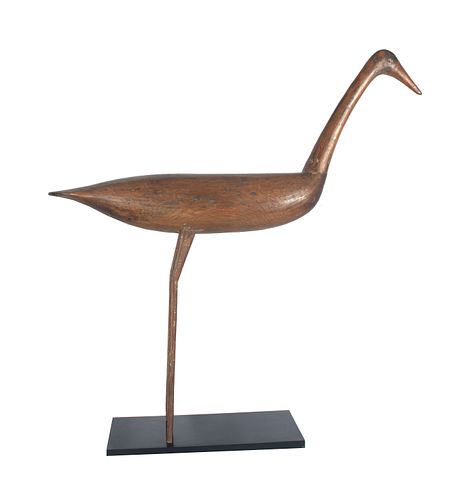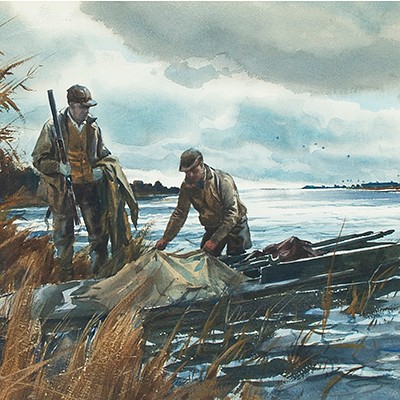Earnest-O'Brien Southard Heron Decoy, William H. Southard (1874-1940)
About Seller
20 Winter Street
Pembroke, MA 02359
United States
Copley Fine Art Auctions is the world's leading American sporting art auction company. Located in Hingham, MA, Copley specializes in antique decoys and 19th- and 20th-century American, sporting, and wildlife paintings. Principal Stephen O'Brien Jr., a fourth-generation sportsman with a refined colle...Read more
Two ways to bid:
- Leave a max absentee bid and the platform will bid on your behalf up to your maximum bid during the live auction.
- Bid live during the auction and your bids will be submitted real-time to the auctioneer.
Bid Increments
| Price | Bid Increment |
|---|---|
| $0 | $50 |
| $1,000 | $100 |
| $2,500 | $250 |
| $5,000 | $500 |
| $10,000 | $1,000 |
| $25,000 | $2,500 |
| $50,000 | $5,000 |
About Auction
Mar 5, 2022
Lots 265-556 Copley Fine Art Auctions cinnie@copleyart.com
- Lot Description
Great Blue Heron
William H. Southard (1874-1940)
Seaford, Long Island, NY, c. 1880
37 in. long by 37 in. high
"Another distinguishing characteristic of the Long Island decoy was the use of natural roots and tree knots for the heads of ducks, heron and snipe...These 'knot-heads' were not only lifelike, but they were tough." — Adele Earnest, "The Art of The Decoy," 1965
"When well conceived and endowed with the awkward grace of the great bird itself, a heron decoy can take command of almost any collection.“ — William J. Mackey Jr.
True working heron decoys are difficult to obtain, with decoys by known makers nearly non-existent. Heron carvings were often used as confidence decoys for other species. Additionally, these waders were hunted for table fare and for their plumage until they received full legal protection under the Migratory Bird Treaty Act of 1918.
One of the rarest of Southard species, this decoy features the maker's long racy posture, signature circular incised eyes, and spade-shaped tail. With its strong provenance and grand form, this heron stands tall among both Southards and heron decoys. The decoy was likely initially used with a single stick, with the legs added while the bird was still in use.
Gunning wear, paint has been taken down, filler to original crack along bottom, and small crack at base of neck.
Provenance: Adele Earnest, Stony Point, New York
Donal C. O'Brien Jr. Collection
Private Collection, New York
Literature: William J. Mackey Jr., "American Bird Decoys," New York, NY, 1965, p. 59, pl. 40, related heads illustrated. Robert Shaw, "Bird Decoys of North America," New York, NY, 2010, p. 91, related example illustrated. Adele Earnest, "The Art of The Decoy," New York, NY, 1965, p. 121.Please email condition report requests to colin@copleyart.com. Any condition statement given is a courtesy to customers, Copley will not be held responsible for any errors or omissions. The absence of a condition statement does not imply that the lot is in perfect condition.Condition
- Shipping Info
-
Copley Fine Art Auctions does not handle the shipping of any items. Shipping is the sole responsibility of the buyer. Once your payment has cleared, and we have received your authorized shipping release form items may be released for shipment. Copley Fine Art Auctions, LLC shall have no liability for any loss or damage to such items. Buyers should allow up to four weeks for shipment.
-



 EUR
EUR CAD
CAD AUD
AUD GBP
GBP MXN
MXN HKD
HKD CNY
CNY MYR
MYR SEK
SEK SGD
SGD CHF
CHF THB
THB














